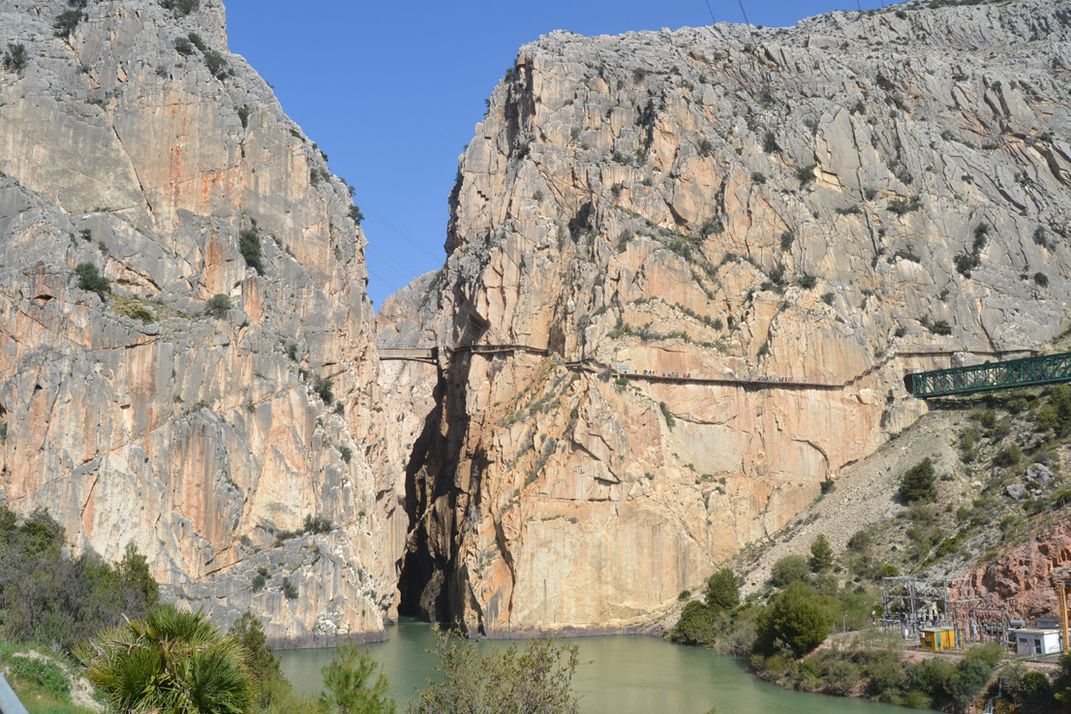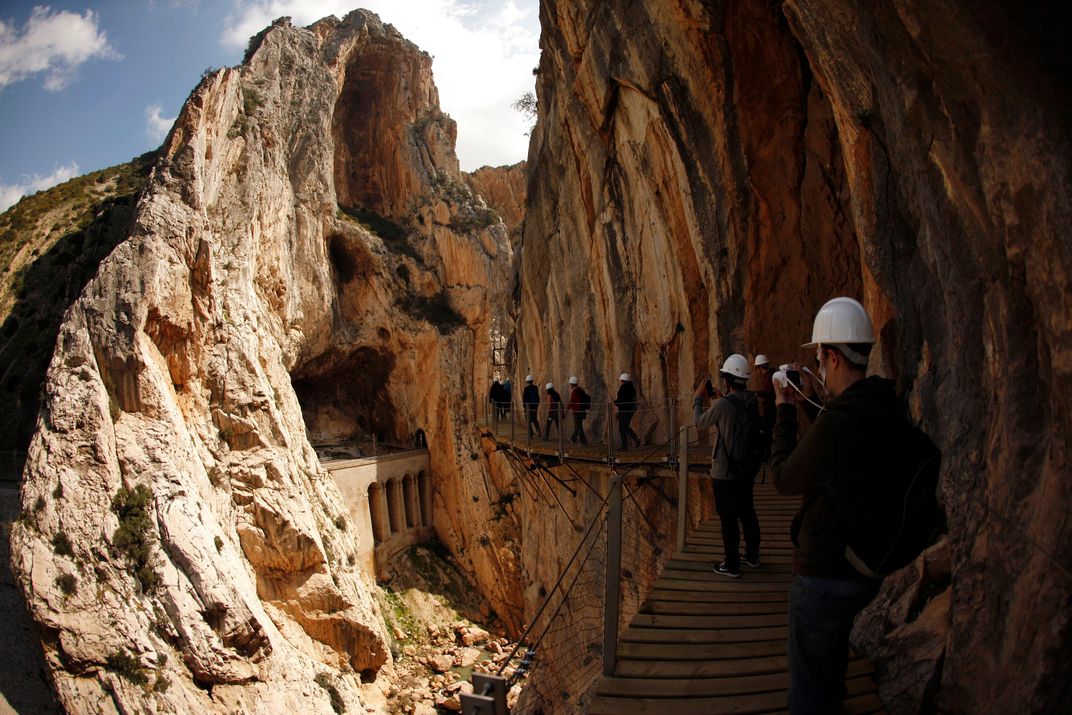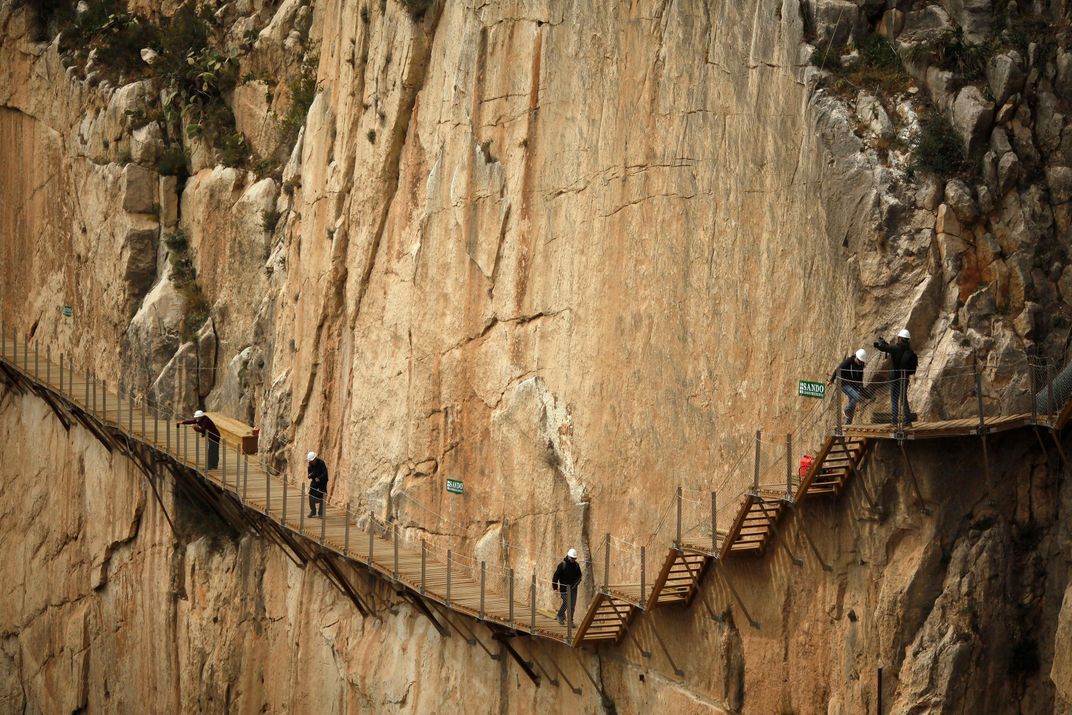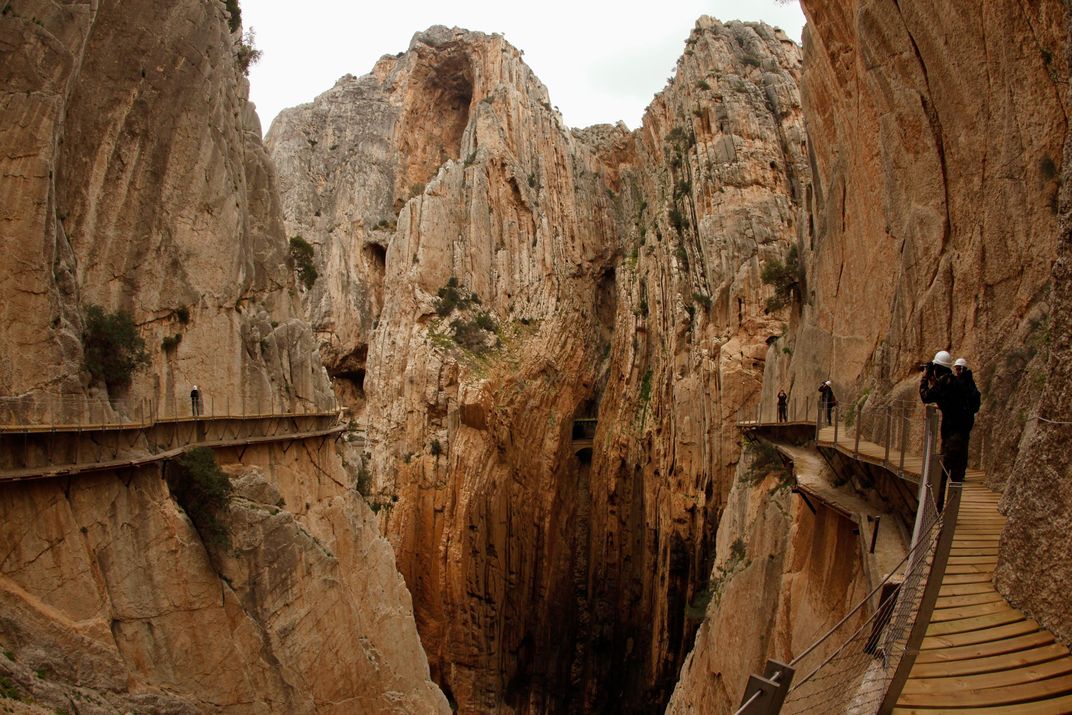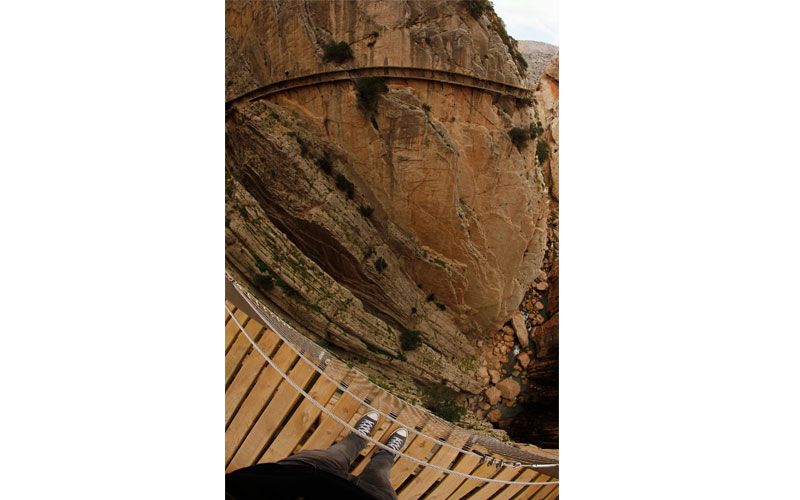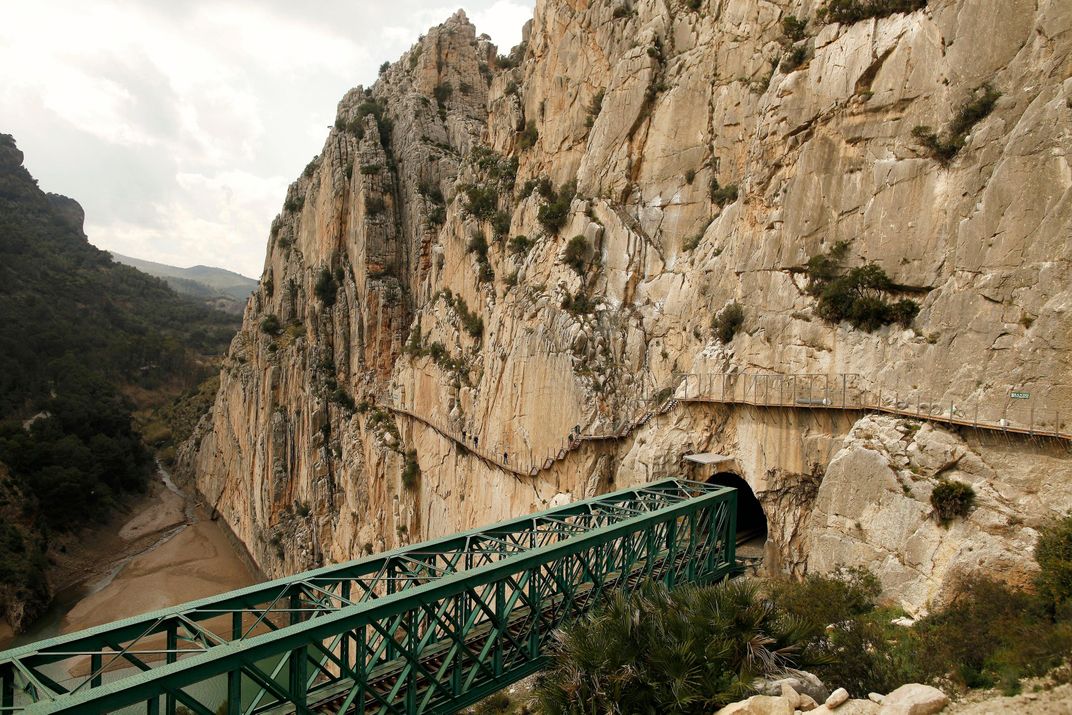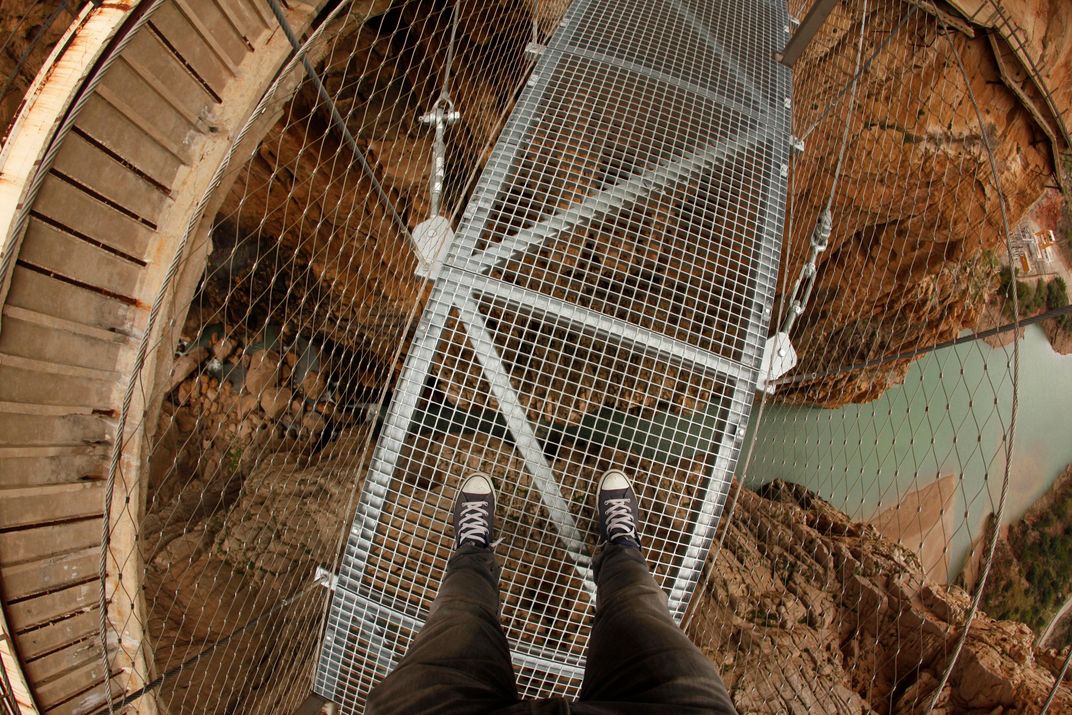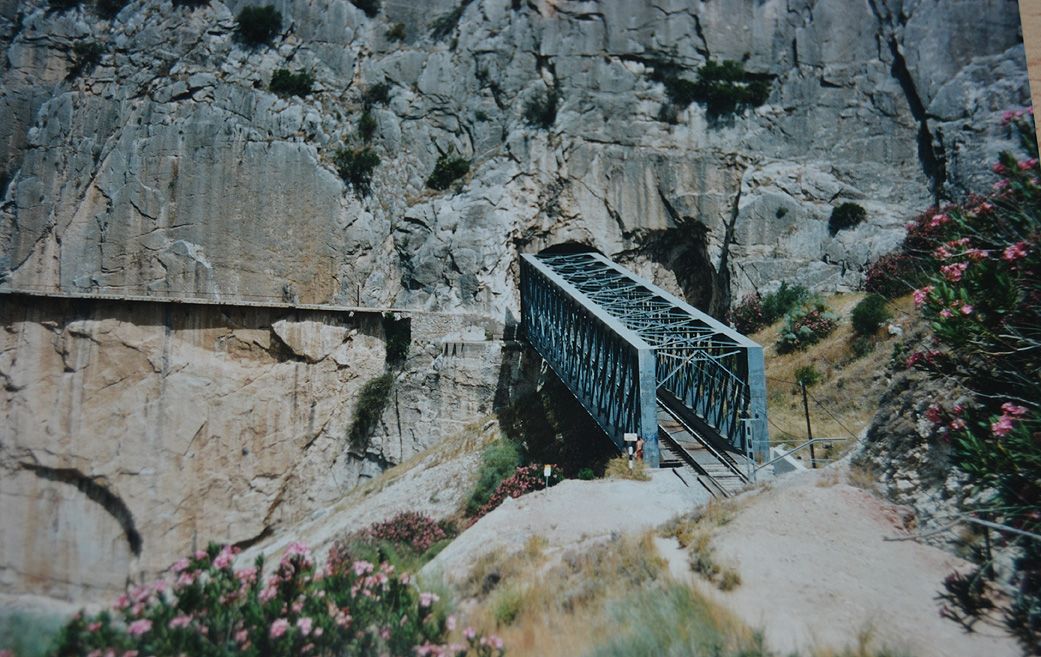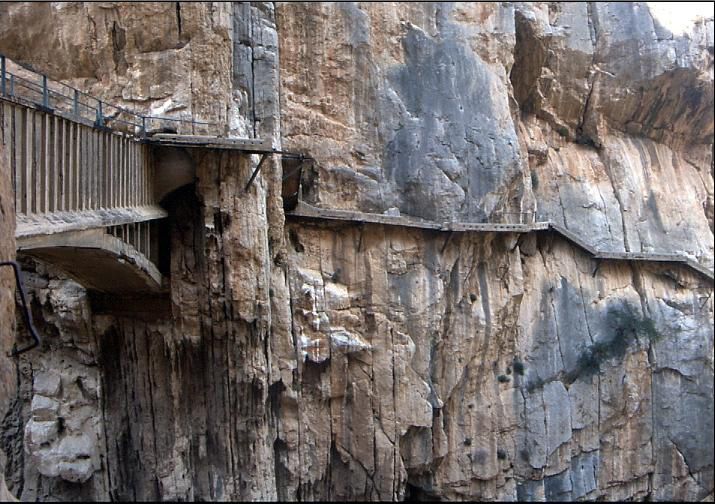“The World’s Most Dangerous Trail” Reopens This Week
A once-deadly path is now a modern tourist attraction
It’s only three feet wide, clinging to a sheer cliff. Three hundred feet below lies a rocky gorge and the Guadalhorce River. Its 1.9 miles provide stunning views of southern Spain’s natural beauty. The El Caminito del Rey, once called “the world’s most dangerous path,” has been in disrepair for nearly a hundred years. But on March 28, coinciding with Spain’s Holy Week, the walkway near the small Spanish village of El Chorro will officially reopen for the first time in over ten years, thanks to a reported $5.8 million restoration effort that has made the trail safe and accessible for hikers.
The path was originally constructed between 1901 and 1905 as an access road to connect two local hydroelectric sites. At the time, it was considered state of the art, with concrete, steel rails, lights and barriers for safety. It soon became part of local villagers’ daily lives: day and night, people would walk, bike and ride horses across the path—women going shopping in the next village, children going to and from school, men using it to get between the hydroelectric sites. In 1921, King Alfonso XIII walked the path when he attended the opening of the nearby Conde del Guadalhorce dam, which led locals to name it El Caminito del Rey (“The King’s Little Pathway").
Over time, locals began to use the path less and less. Neglect left it crumbling and dangerous, with giant chunks of concrete falling into the river below. Nonetheless, adventurers flocked to the spot, willing to risk their lives for the thrill and amazing views. In 1999 and 2000, several people fell to their death from the path, and after that, local governments declared it officially closed, demolishing the entry points and imposing a hefty fine to discourage trespassers.
Their efforts didn’t work, and with the rise of YouTube and GoPro cameras the El Caminito del Ray became even more popular with thrill seekers. Clive Muir, a local photographer, writer and operator of the tourism site Caminodelray.es, says the path’s popularity really took off over the last decade. “Fame came when a few climbers ‘found’ it and their videos went viral on YouTube. That’s when it really became a mecca for radical adrenalin junkies,” he notes.
In the late 2000s, local governments decided there was enough interest—and danger—associated with the path to mount a restoration effort. After raising the millions required, work began in March 2014. An estimated 500 tons of metal and concrete were used to fortify, rebuild, strengthen and resurrect the route.
A year later, the El Caminito del Ray is safely re-opening, with all the features of a modern-day attraction: timed tickets, a museum and a visitors’ center. Surrounding communities hope the reopening will bring more tourism and money to the region. However, there is some opposition from climbers upset that the path and gorge are becoming more public. “Many climbers that come from all over the world feel that their mecca has been destroyed and, in a way, it has been,” Muir says. Yet as a local, he fully supports the project, believing the influx of visitors will ultimately help his home: “There will be a great improvement for many local businesses in an area that largely has been forgotten in the tourism market.”
But for those considering a trip, hold off on booking that flight. There are no more tickets available in April or May (there is a limit of 600 people per day) and no other tickets have been released for dates down the line. However, authorities say that more tickets will eventually be available, offering the opportunity to see the once-dangerous trail in relative safety.
